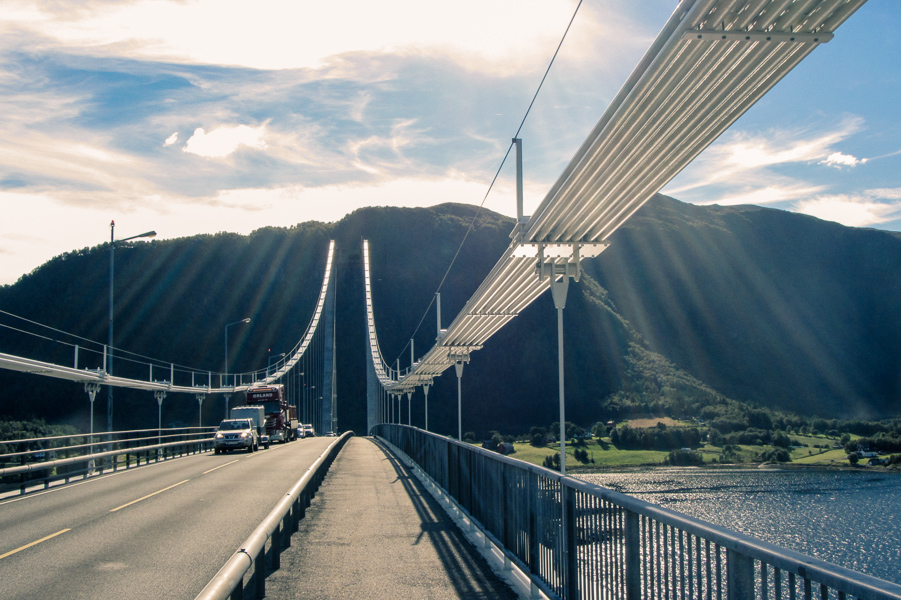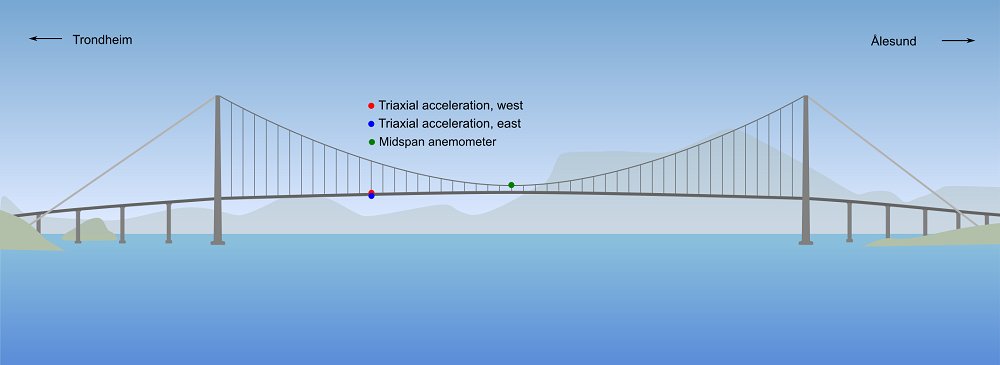Gjemnessund - Monitoring - Research - Structural Dynamics - Department of Structural Engineering
MENU
The Gjemnessund Bridge monitoring project
The Gjemnessund Bridge monitoring project
The Gjemnessund Bridge, built in 1992, is a 1257 m long suspension bridge crossing the Gjemnessundet strait on the northwestern coast of Norway, in Møre og Romsdal county. The main bridge span is 623 m, which makes it the fith longest suspension bridge in Norway. The box girder is made of steel and the towers of concrete.

The monitoring system consists of the following sensors (illustrated in Figure 2):
- 2 triaxial accelerometers
- 1 anemometer

